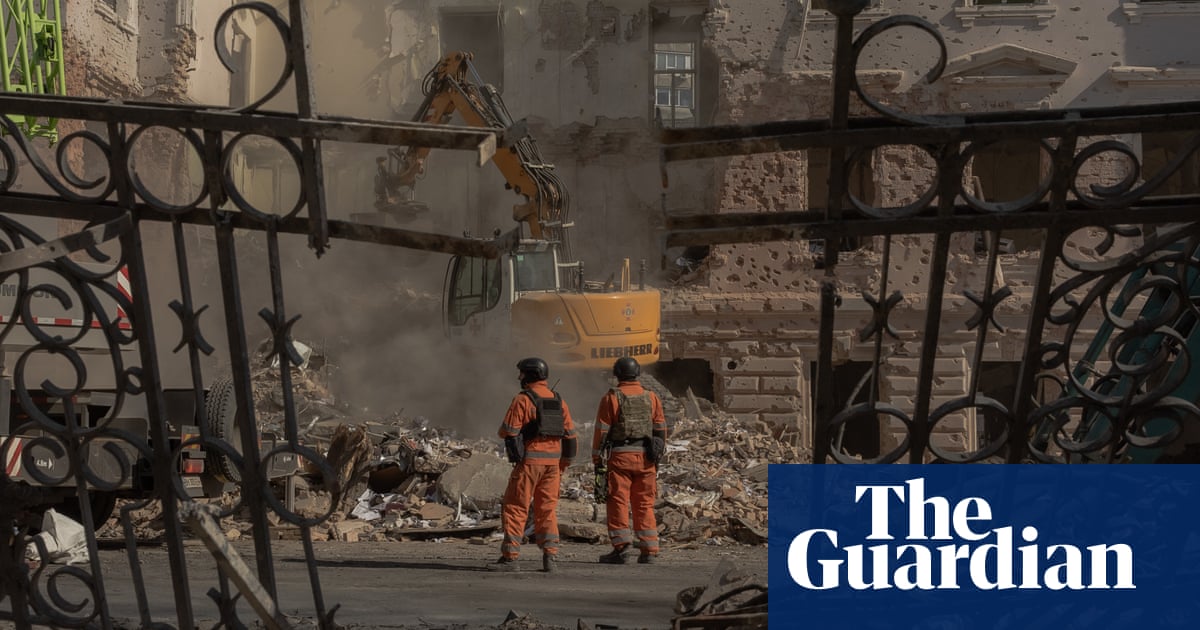Russian military units appear to be within 18 miles (29km) of the city of Sumy, three years afterUkraineforced them out of the northern region, while also making new and symbolically important ground in the east.
Independent monitors confirmed Kremlin claims to have retaken the village of Loknia, which had been liberated along with the rest of the Sumy region during Ukraine’s 2022 spring counteroffensive.
It is the latest settlement in the region to be retaken by Putin’s forces in recent weeks.
The city of Sumy, which is 200 miles north-east of Kyiv, was never occupied byRussiaafter the full-scale invasion, but Putin’s forces have been bearing down on the regional capital.
Volodymyr Zelenskyy warned last month that Russia had concentrated 50,000 troops on the Sumy front, and a series of settlements in the area have since fallen.
The regional governor, Oleh Hryhorov, announced the mandatory evacuation of 11 more villages on 31 May, bringing the total number of evacuated settlements in the Sumy region to 213.
The Russian defence ministry further claimed on Sunday that forces had reached the western frontier of the Donetsk region, in the east of Ukraine, and were advancing in the adjacent Dnipropetrovsk region for the first time in three years of full-scale war.
The ministry said forces from a tank unit had “reached the western border of the Donetsk People’s Republic and are continuing to develop an offensive in the Dnipropetrovsk region”.
A spokesperson for Ukraine’s Southern Defence Forces said: “The enemy does not abandon its intentions to enter the Dnipropetrovsk region. Our soldiers are courageously and professionally holding their section of the front, disrupting the occupier’s plans. This work does not stop for a minute.”
The advance of Russian forces into the industrial region of Dnipropetrovsk for the first time would be a symbolic and strategic setback for Kyiv after the morale-boosting results of Operation Spiderweb, in which its drones attacked some of the Kremlin’s nuclear-capable bombers deep inside Russia.
The Kremlin claimed in 2022 to have annexed the Donetsk, Kherson, Luhansk and Zaporizhzhia regions despite not having complete control of them. Dnipro, the administrative capital of Dnipropetrovsk, has been under near constant fire since the invasion began.
Independent monitors said there was also evidence that Russia was advancing on the city of Kostyantynivka, in the Donetsk region, from several directions. The city has been a key logistical hub for Ukraine’s forces since February 2022 when Putin launched his full-scale invasion.
A Ukrainian military spokesperson, Dmytro Zaporozhets, confirmed that Russian forces were trying to “build a bridgehead for an attack” on Kostyantynivka.
Ukraine’s cities are also bracing for fresh night-time missile and drone attacks after US officials said they did not believe Russia had fully responded to Monday’s Operation Spiderweb, when 117 drones struck aircraft inside Russia.
Russia launched one of its most intense aerial barrages of the war on Thursday night and into the early hours of Friday morning, firing 452 drones and 45 missiles at Ukrainian cities and infrastructure, but further plans were believed to be in the making.
One US official told Reuters that while the timing remained unclear, a retaliatory strike could be expected in the coming days and was likely to be “asymmetrical”.
With the war heating up, even the small progress made in the talks in Istanbul between the warring parties appeared at risk of unravelling. A large-scale exchange of prisoners and bodies of the dead due to be held on Monday seemed in doubt after each side accused the other of breaking the terms of the agreement.
Kyiv and Moscow agreed to release all wounded soldiers and those under 25, equating to more than 1,000 people from each side. Russia said it would also hand back the remains of 6,000 killed Ukrainian soldiers.
The Kremlin accused Ukraine of not turning up to collect the bodies already at the border and prevaricating over Monday’s prisoner exchange. Russian officials said they would continue to deliver further bodies to the border.
Ukrainian officials accused Russia of playing “dirty games” and not sticking to the agreed parameters for the exchange by including personnel in a list of prisoners they wished recovered who were not eligible.
“The Ukrainian side has unexpectedly postponed for an indefinite period both the acceptance of the bodies and the exchange of prisoners of war,” Russia’s chief negotiator, Vladimir Medinsky, said on social media.
Ukraine’s Coordination Headquarters for the Treatment of Prisoners of War said no date had been set for the prisoner exchange.
They said: “Unfortunately, instead of constructive dialogue, we are again faced with manipulations. We call on the Russian side to stop playing dirty games and return to constructive work to bring people back to both sides and to clearly implement the agreement in the coming days”.
